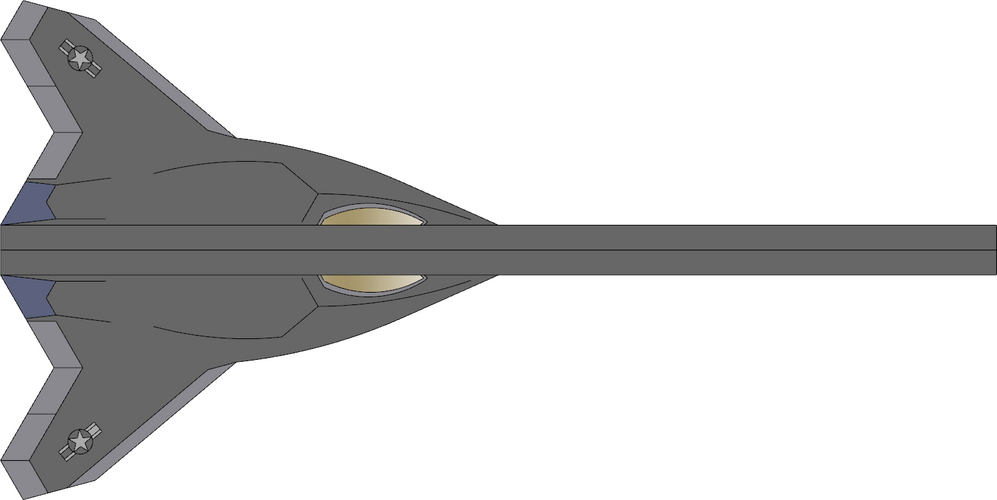You could also say we've been flying drones since Vietnam. But saying that, as well as flying ISR and other assets in a permissive environment, underplays the significance of Kendall's affordable mass concept. It's revolutionary and as such is very risky.
Regarding the Century Series model. Different time. Different place. Simpler technology, more hardware than software dependent. Did it really produce great fighters? Or was its value mainly an approach which developed technology and helped the Air Force determine what attributes it wanted in its fighters?
You may be emulating the broad outlines of the idea with CCAs with a similar approach. Will it work from a cost and engineering perspective? Will it provide systems which help the AF counter China without wasting a lot of money on dead ends?
I certainly see the value of the "Century Series model" as
secondarily developing technology and
primarily helping the USAF figure out what attributes it wanted in its fighters.
Examples:
- F100s were okay supersonic fighters, but they couldn't carry as much as the USAF wanted. So there was the F-101A that could carry as much as the USAF wanted (and the F-101B made a pretty good long range interceptor that wasn't Mach 2)
- F102s were pretty good interceptors but weren't Mach 2, so let's stick a J75 in there and presto it's the F-106.
F103 and F105 (edit and F-107 were competing for the same fighter-bomber contract, and the F-105 wound up better at low altitude where fighter-bombers would end up working.
and F-107 were competing for the same fighter-bomber contract, and the F-105 wound up better at low altitude where fighter-bombers would end up working.- F-104 was a short range interceptor with screaming performance, and was developed as one idea of "what the warfighters wanted" based on their experience in Korea. While I do see a potential CCA role for that flight profile, it's not for operations in the Pacific exactly. It's as a recoverable first stage "missile" able to cover more ground than modern anti-hypersonic SAMs, which would do better over Europe.
- XF-108 would have made a Mach 3 interceptor and B-70 escort, and was canceled with the B-70 along with a lack of Soviet long-range bombers.
- F-110/F-4 kinda ended up as the super evolution of the F-101, putting both fighter-bomber and interceptor into the same Mach 2 airframe at the same time.
- F-111 was another attempt at a super interceptor and low-level interdiction fighter-bomber combination with more range than an F-110/F-4, but the interceptor part did NOT work out well. Frankly, the two mission profiles were completely incompatible in the first place.
I would be surprised if we got CCAs the size of the F-110/F-4, and I expect the NGAD to be the size of the F-111, so unless someone uses the NGAD airframe without a cockpit it's
beyond unlikely that there will be any CCAs that big.
The challenge for the AF is they have to get this right. It is not the 1950s and 60s. There is not a lot of cash it can burn through in order to try different things.
Very much agreed here, but if they buy 100ish Increment 1 CCAs and discover that the warfighters really need something a little different there's much less loss than if they buy 1,000ish Increment 1 CCAs.
With 100ish CCAs, that's enough to give 32 aircraft each a set of 3 CCAs. That's only ~2 squadrons of manned planes. Maybe 4 squadrons, since I think arming and fueling the CCAs will take enough ground crew that you'd want to run 8x NGADs and 24x CCAs per squadron. Or even more CCAs, if we're including EW/ISR and BACN node CCAs in that count, nevermind any ground attack CCAs (that the USAF has oddly not even mentioned as excluding from the list of what they want).
Frankly, Increment 1 should be seen as equivalent to the first generation Spad A-series in WW1. Just barely figuring out what will work, not what the end users really want (Spad XIIIs).
If the Increment 1 CCAs do turn out to be pretty spot-on for a subsonic 2x BRAAM long range "spear carrier"
and the USAF actually wants more? Sweet, let's order more!
But I expect the USAF will want
supersonic 2-4x BVRAAM long range "spear carriers" instead. The subsonic birds might get turned into EW/ISR or even BACN nodes, and assigned out at like 4-8 per squadron in that case.
So I don't expect any given CCA Increment to have more than 100 or so ordered. At least not till we get to the CCA equivalent of the F-106 or maybe F-4.
F-4 equivalent CCAs would be packing 4+4 or 6+2 BVR+WVR AAMs in general, plus possibly multirole with space for a bombload larger than the F-35 (I'm guesstimating 4x 2000lb or 4x4 SDBs or whatever, on top of all those AAMs).


